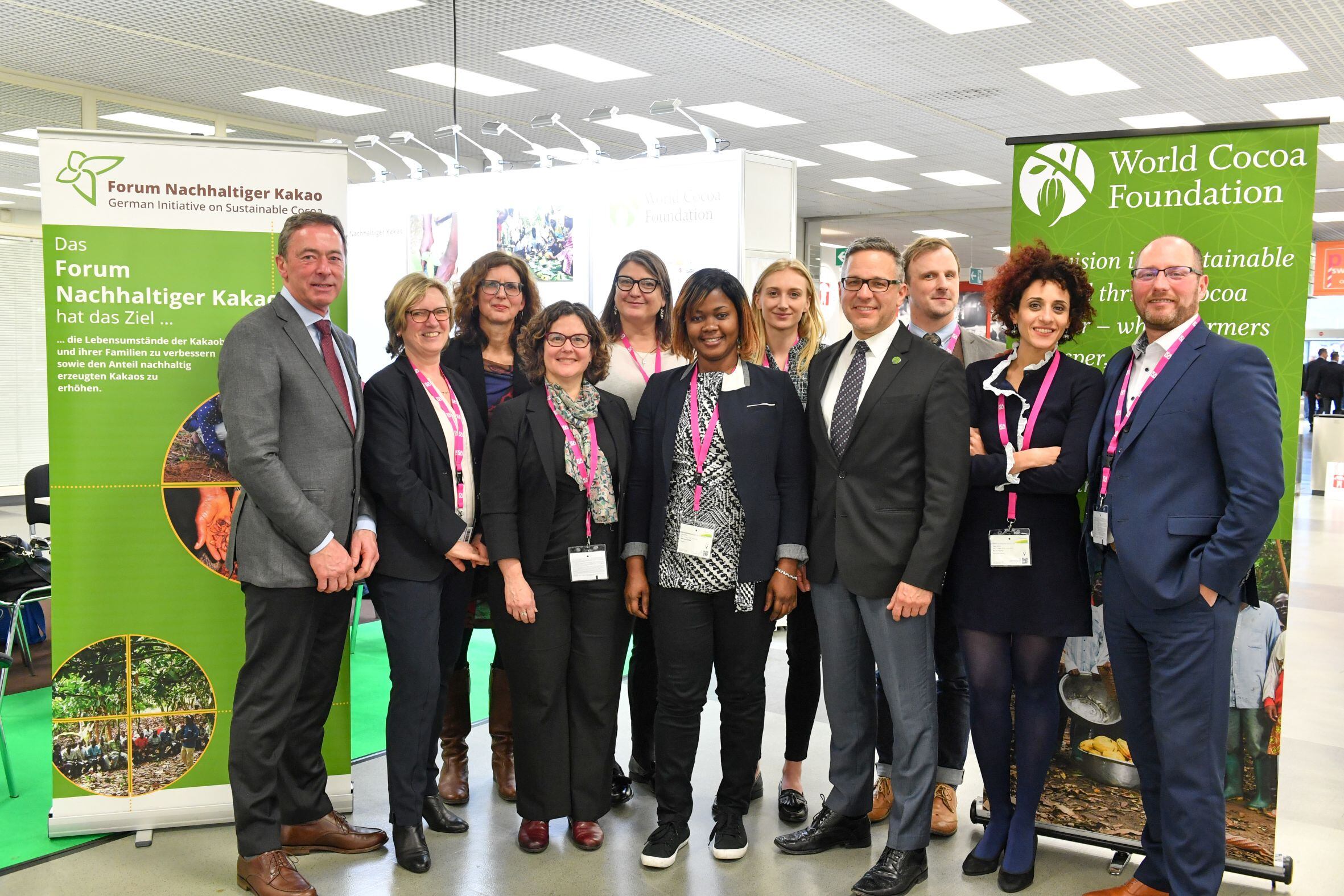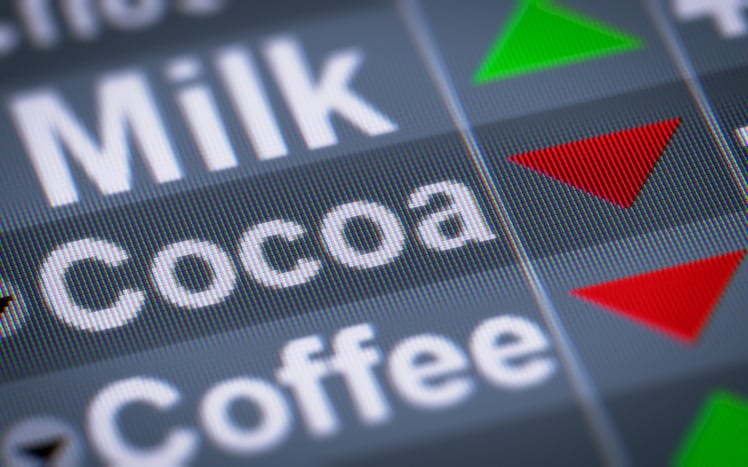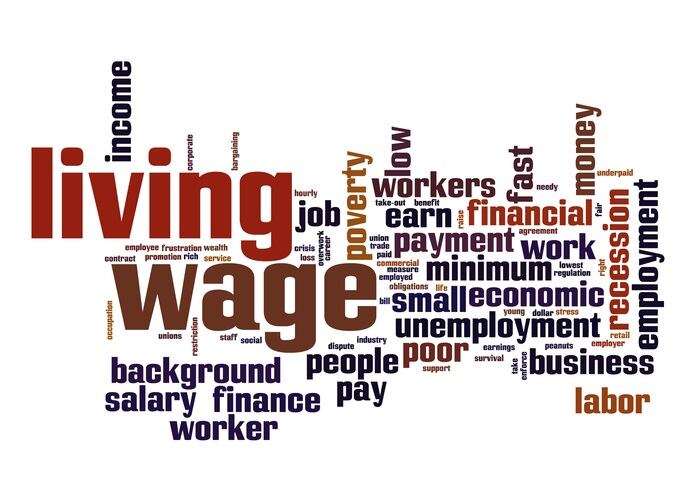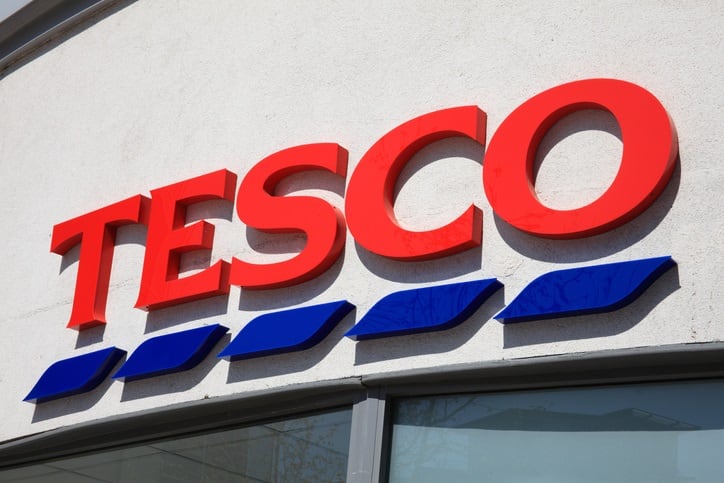Cadbury and Milka maker Mondelēz was among the speakers at a session titled ‘Certification and More’ at last month’s International Sweets Fair (ISM), the world’s largest confectionery show.
Conference delegates acknowledged structural challenges in cocoa, such as extreme poverty and deforestation, could not be addressed solely buying Rainforest Alliance and Fairtrade cocoa.

The chocolate industry is looking to go further. However ‘going beyond certification’ means different things to different actors.
- Industry-led organization the World Cocoa Foundation (WCF) urges industry-wide action in partnership with governments, certification bodies and cocoa communities as seen with the Cocoa & Forests Initiative on deforestation. It also calls on higher certification premiums.
- NGO the VOICE Network favors EU regulation to make voluntary standards mandatory to ensure a living income for farmers.
- Mondelēz says it is going further by moving out of transactional cocoa buying and focusing on its own Cocoa Life program. It also questions whether a smallholder model on small two-hectare farms can ever be sustainable.
- ISEAL, an association of sustainability standards, whose members include Fairtrade and Rainforest Alliance, is working on living income benchmarks, which it hopes can help companies measure progress.
Is certified cocoa ‘sustainable cocoa’?
Around 22% of globally traded cocoa is certified, according to WCF.
“This is not enough to realize the promised increasing effect on cocoa farmers’ incomes,” said the German Initiative on Sustainable Cocoa (GISCO) and WCF in a joint press release.
Certification has improved farm productivity and raised awareness about issues in the sector, but has shown limited impact in lifting farmers out of poverty and reducing unlawful child labor, according to some stakeholders.
For more details, see our coverage - How effective is cocoa certification?
However, certified cocoa is often a proxy for “sustainable cocoa”.
In country commitments – such as in Germany and Switzerland - cocoa is sustainable if it is certified Fairtrade, Rainforest Alliance, Organic or through an equivalent system.
Major companies also measure progress in sourcing ‘sustainable cocoa’ based on their percentage of certified volumes.
Ferrero, in its latest CSR report for example, said 50% of its 120,000 MT cocoa needs for financial year 2015/2016 were “certified as sustainable cocoa”, meaning it came from UTZ, Rainforest Alliance or Fairtrade.
Voice Network: From voluntary to mandatory
Antonie Fountain, managing director of the VOICE Network said at the ISM event: "We've needed to go beyond certification for a long time."
Voice Network on the cocoa price drop

Fountain said last year’s cocoa price collapse was “disastrous for cocoa farmers”. He said: “There are very few companies stepping in and saying we’re going to take some of the price collapse - companies with massive reserves, huge turnover and profits. People bearing the brunt of this price collapse are farmers. They are always the ones who bear the highest risk. We need to make sure there is a living income and that means we can't just trust the market to do what is right."
He suggested EU-wide legislation could force through change in the cocoa sector and compel companies to have checks and balances on child labor and deforestation.
"Everything we talk about today is voluntary... you can choose to ignore it if you don't like it.
"Let's actually have some laws that turn some of these really important sustainability issues non-voluntary where you have to comply, simply because extreme poverty, child labor, gender inequality should not be a voluntary choice,” he said.
Higher premiums
Tim McCoy, vp of member and external relations at WCF, told this site its members – such as Mars, Ferrero and Nestlé – benefit from certifiers’ experience on farm measurement, and the public awareness they raise on cocoa sustainability.
But he said: “…WCF believes that certification must focus on the needs of the farmers and their incomes as well as the social and environmental issues in their communities that contribute to sustainable livelihoods.
“Further improvements to the certification process must include ensuring higher premium payments to farmers and robust efforts to address dangerous practices in the cocoa sector.”
What is a living income?
Stakeholders agree farmer income must improve, but what is a meaningful increase?
Living wage for Ghana's Volta River

The Living Income Community of Practice has yet to publish living income benchmarks in cocoa regions. But in February 2017, the Global Living Wage Coalition said a ‘living wage’ for the lower Volta River area of Ghana – a banana growing region – was GHS 1,028 ($2,351) per month, or GHS 47.45 ($10.86) per workday. There a limited public studies on how much a cocoa farmer in Ghana typically earns, but cocoa farmers in the top producing country Côte d’Ivoire earn around 91 US cents (CFA 568) per day, according to a study by Barry Callebaut and the French Development Agency (AFD).
The Global Living Wage Coalition - which is supported by sustainability standards organization ISEAL - is currently publishing region specific ‘living wage’ benchmarks in agricultural areas across the world.
ISEAL is also one of three conveners that plan to publish ‘living income’ benchmarks for cocoa growing communities in Côte d’Ivoire and Ghana under the ‘Living Income Community of Practice’ initiative, in partnership with the Sustainable Food Lab and GIZ. The studies will be publically available in August 2018.
The work on ‘living wage’ focuses on employed workers, while ‘living income’ relates to smallholder farmers.
Kristin Komives, director of impact at ISEAL, told us: “Having that information can help companies, sustainability standards, civil society, producer organizations and governments assess how to improve their strategies and collaborate in closing the income gap.”
Mondelēz reporting income data
Mondelēz said it monitors and reports changes in Cocoa Life farmers’ income from cocoa and non-cocoa sources.
The company did not report income data in its last Cocoa Life Progress report.
However, last year it reported a 37% increase in income from cocoa (from $459 to $630) and a 43% increase in annual household income for Cocoa Life farmers in Indonesia.
It intends to publish West Africa results at the end of this year.
Mondelēz: Certifiers no longer our eyes and ears on cocoa farms
Mondelēz told us certification was “one tool” towards sustainability, which helped inform its own 10-year $400m Cocoa Life program, initiated in 2012.
The Cadbury maker is transitioning out of certified cocoa and aims eventually to source entirely from its own program. In November 2016, it said Fairtrade would become an implementing partner for Mondelēz’s Cocoa Life program.
“Through Cocoa Life, we’ve moved from a buyer to an accountable partner and, as we have become more directly involved, we no longer need certifiers to act as our eyes and ears on the ground,” Cathy Pieters, director of Mondelēz's Cocoa Life program told ConfectioneryNews.
“Our focus is on learning and verified impact, rather than compliance with specific practices,” she said.
Is a smallholder model sustainable?
The cocoa sector is comprised of around 95% smallholder-owned farms with very few large, professional plantations, according to the International Cocoa Organization (ICCO).
At the ISM event, Pieters said: “We are all trying to solve the problems of smallholder farmers, but if we really think through a long-term transformation, is a smallholder model of two-hectare farms a sustainable situation?"
She later told us by email: “We have to ask if two-hectare plots are viable or if it would be better for farmers to consolidate onto larger plots of say 10 hectares.”
Aminata Bamba, a representative of Ivorian cocoa cooperative ECOOKIM, said at the ISM event: "I think two hectares is a small size - it's downright impossible to feed a family with that." [French translation]
But she said certification had raised cocoa production and quality and had led to better school attendance in ECCOKIM’s community.

Tesco: Affordable and sustainable
UK supermarket Tesco’s responsible sourcing manager Rachel Munns said her company has made a "public commitment to be responsibly sourced" by ensuring 100% of Tesco own label chocolate is Rainforest Alliance certified.
But Munns said this was only a first step.
"Certification is great at addressing some of the issues at farm level, but it doesn’t go beyond addressing more endemic issues in the community whether it be deforestation and child labor."
She said consumers increasingly want to know the source of products.
“However, not all customers are willing or able to pay more for a product that claims to be sustainable. So we have to find a way to make it affordable and sustainable,” she said.
